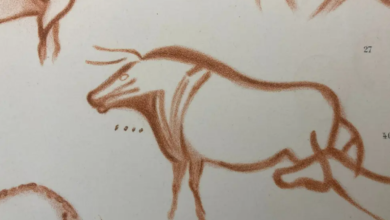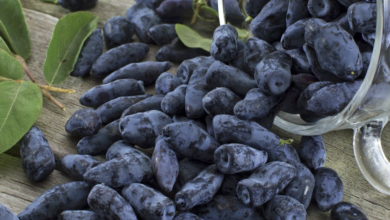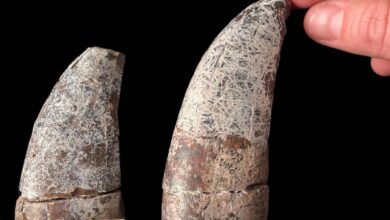Study unravels mystery of how pandas became vegetarians around six million years ago

Scientists have found the earliest fossil evidence of a thumb-like sixth digit used by giant pandas to grip bamboo stems, an advance that suggests the bear’s vegetarian diet may have originated at least six million years ago.
A greatly enlarged wrist bone called the radial sesamoid was discovered in fossils in southwest China’s Yunnan province dating back to about six million years, according to research published last week in the journal Scientific Reports.
The findings shed light on how the giant panda species developed a “false thumb” which enabled it to to grip and break heavy bamboo stems, turning it into the only dedicated vegetarian in the bear family, said researchers, including those from the Chinese Academy of Sciences in Beijing.
The wrist bone of an individual from the ancestral panda genus Ailurarctos was discovered at Shuitangba, a site near Zhaotong city in Yunnan and examined by scientists who determined that it dated back to the late Miocene period about six to seven million years ago.
Researchers compared the shape and size of this bone to previously published data on the wrist bones of modern giant pandas and Indarctos arctoides – an ancient bear that lived nine million years ago and that could share the same common ancestor as giant pandas.
They found the modern giant panda’s thumb-like structure has the same distinctive shape as Ailurarctos’s wrist bone but not I arctoides’s, which was larger, wider and more hooked.
Based on these findings, scientists said the thumb-like sixth digit was not present in I arctoides.
This “fake thumb”, however, was present within the panda lineage and used by them to grip bamboo for millions of years, they explained, adding that it differed in shape and size in both modern giant pandas and their Ailurarctos ancestor.
While the modern giant panda’s digit is significantly shorter than Ailurarctos’s in relation to its body size and has a hook on the end of it and a flattened outer surface, the Ailurarctos’s does not, the study noted.
Scientists suspect the hook may help modern pandas better grasp bamboo, while the shorter length and flattened outer surface may assist with weight distribution when walking.
The modern panda’s shorter false thumbs could be an evolutionary compromise between the need to manipulate bamboo and the need to walk, scientists pointed out.
“Evolving from a carnivorous ancestor and becoming a pure bamboo-feeder, pandas must overcome many obstacles. An opposable ‘thumb’ from a wrist bone may be the most amazing development against these hurdles,” said Xiaoming Wang, Curator of Vertebrate Paleontology at the Natural History Museum of Los Angeles County.
“This crude ‘thumb’ suggests that the origin of the panda’s dedicated bamboo diet goes back to as early as 6–7 Ma,” researchers wrote in the study.





